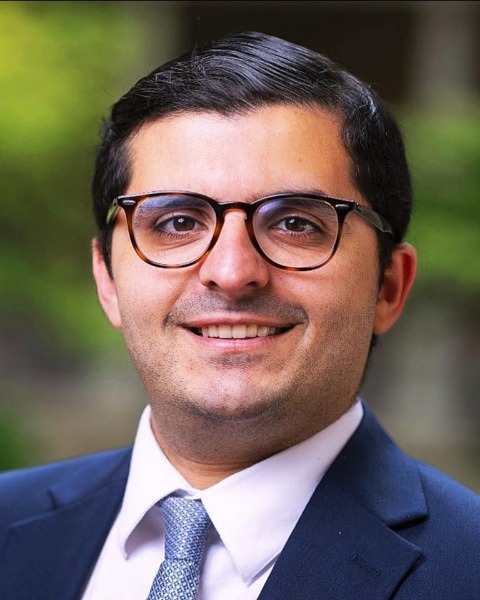Oncology
Proton vs Photon Radiotherapy: A Multi-center Comparative Evaluation of Recurrence and Volumetric Progression Following Spinal Chordoma Resection.
Friday, February 21, 2025
7:00 AM - 2:00 AM EST

Abdul Ghaith, MD, PhD
Post-Doctoral Neurosurgery Research Fellow
Johns Hopkins University
Baltimore, MD, US
Presenting Author(s)
Introduction: Chordomas are rare tumors of the skull base, mobile spine, and sacrum believed to arise from the vestiges of the embryonic notochord. These tumors are locally aggressive and frequently recur following resection and adjuvant radiotherapy. This study aimed to compare recurrence and volumetric progression in patients receiving proton or photon radiotherapy following surgical resection for chordoma by applying tree-based machine learning models.
Methods: The authors reviewed the clinical records of all patients treated with surgical resection followed by adjuvant proton or photon radiotherapy for chordoma. Patient demographics, type of surgery and radiotherapy, recurrence rate, volumetric progression, tumor histopathology, and other variables were extracted.
Results: A total of fifty-three patients receiving surgery and adjuvant proton or photon therapy to treat chordoma were identified, with a mean age of 55.2 years (± 13.4). The majority of patients were male (n = 33, 62.3%), and nearly all patients were White (n = 52, 98.1%). Gross total resection was achieved in 54.8% of cases (n = 29). Proton therapy was the most common adjuvant radiotherapy (n = 45, 84.9%), followed by conventional or external beam radiotherapy (n = 5, 9.4%) and stereotactic radiosurgery (n = 3, 5.7%). Logistic regression analysis revealed proton therapy was associated with a decreased risk of recurrence (OR = 10.5; CI = [1.19,92.75], p = 0.01) and progression (OR = 15.5; CI = [1.74,138.26], p = 0.002) compared to non-proton therapy. Decision-tree analysis found tumors treated with proton therapy had a 40% chance to be classified as recurrence compared to 88% in tumors treated with non-proton therapy, with an accuracy of 64%. The algorithm accurately predicted volumetric progression (accuracy = 90%), with the lowest rate of progression observed in patients receiving GTR with adjuvant proton therapy (23%). Minimal depth analysis suggested S100 and EMA were the most important variables in predicting recurrence; EMA and pancytokeratin were most important in predicting progression.
Conclusion : Following surgical resection, adjuvant proton therapy was associated with a lower risk of chordoma recurrence and progression compared to photon therapy. The described machine learning models were able to predict recurrence and progression based on the type of surgery and radiotherapy used.
Methods: The authors reviewed the clinical records of all patients treated with surgical resection followed by adjuvant proton or photon radiotherapy for chordoma. Patient demographics, type of surgery and radiotherapy, recurrence rate, volumetric progression, tumor histopathology, and other variables were extracted.
Results: A total of fifty-three patients receiving surgery and adjuvant proton or photon therapy to treat chordoma were identified, with a mean age of 55.2 years (± 13.4). The majority of patients were male (n = 33, 62.3%), and nearly all patients were White (n = 52, 98.1%). Gross total resection was achieved in 54.8% of cases (n = 29). Proton therapy was the most common adjuvant radiotherapy (n = 45, 84.9%), followed by conventional or external beam radiotherapy (n = 5, 9.4%) and stereotactic radiosurgery (n = 3, 5.7%). Logistic regression analysis revealed proton therapy was associated with a decreased risk of recurrence (OR = 10.5; CI = [1.19,92.75], p = 0.01) and progression (OR = 15.5; CI = [1.74,138.26], p = 0.002) compared to non-proton therapy. Decision-tree analysis found tumors treated with proton therapy had a 40% chance to be classified as recurrence compared to 88% in tumors treated with non-proton therapy, with an accuracy of 64%. The algorithm accurately predicted volumetric progression (accuracy = 90%), with the lowest rate of progression observed in patients receiving GTR with adjuvant proton therapy (23%). Minimal depth analysis suggested S100 and EMA were the most important variables in predicting recurrence; EMA and pancytokeratin were most important in predicting progression.
Conclusion : Following surgical resection, adjuvant proton therapy was associated with a lower risk of chordoma recurrence and progression compared to photon therapy. The described machine learning models were able to predict recurrence and progression based on the type of surgery and radiotherapy used.

.jpg)